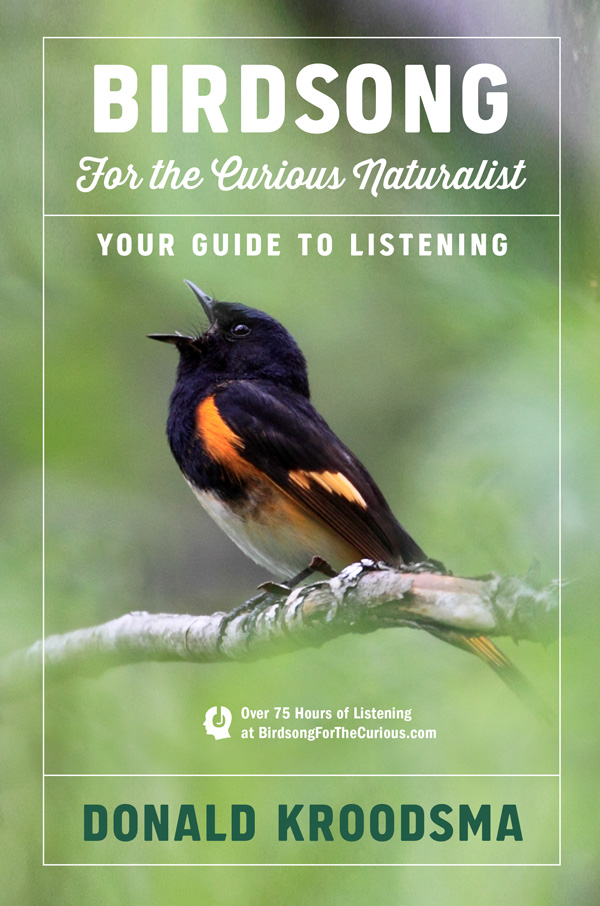25. Listening for practice singing during spring.
4. How a Bird Gets Its Song
Learned songs of songbirds, and babbling
From page 55 in the book.
Listening for practice singing during spring. Come spring, with migrants returning, it can be difficult to distinguish the yearlings from the older birds who are coming back into song. When first-year singers can be identified by their subadult plumage, such as with indigo buntings and American redstarts, one can be certain that the imperfect songs from those birds are a continuation of the songl earning process begun the previous year. For most species, however, one cannot be sure of the singer's age. At any rate, what fun to listen as both young and old birds rehearse tunes for the coming breeding season. Certain sparrows provide especially good listening opportunities as they prepare to migrate north. In the Southeast are the white-throated sparrows, in the far West the golden-crownedsparrows, and throughout much of the West and South the white-crowns.There is nothing quite like a flock of western Brewer's sparrows all in practice song (see p. 121), or a flock of spring dark-eyed juncos, an entire tree full of them in jingly practice song (imagine many individuals like the one in ♫186, in contrast to the stable adult songin ♫187).
♫186: An early spring dark-eyed junco in jingly practice song. He seems to practice what could eventually be just one of his several adult songs, but just listen to how unsteady he is. April 11, 2018. Montague, Massachusetts (0:48)
♫187: Five renditions of each of four different songs from a dark-eyed junco, spliced together from a much longer singing sequence over about an hour. May 25, 2010. Grindstone Campground, Mt. Rogers, Virginia. (2:22)
